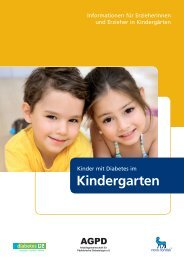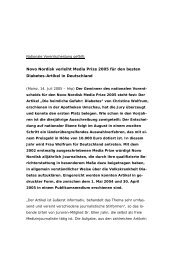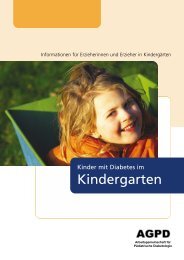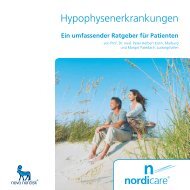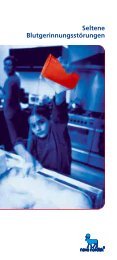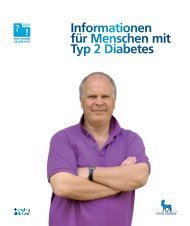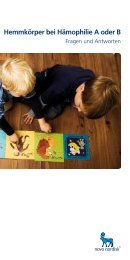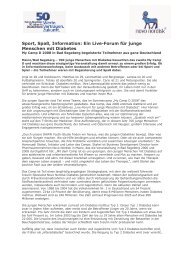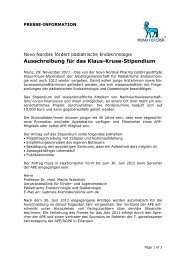Stellungnahme der Firma Novo Nordisk Pharma GmbH zu ... - Aktuell
Stellungnahme der Firma Novo Nordisk Pharma GmbH zu ... - Aktuell
Stellungnahme der Firma Novo Nordisk Pharma GmbH zu ... - Aktuell
Erfolgreiche ePaper selbst erstellen
Machen Sie aus Ihren PDF Publikationen ein blätterbares Flipbook mit unserer einzigartigen Google optimierten e-Paper Software.
showed that treatment with ILis or IAsp resulted in lower blood glucose levels after<br />
three meals compared with HI treatment. 17<br />
Cochrane Review 2006:<br />
• In patients with type 1 diabetes, the weighted mean difference (WMD) of HbA1c was<br />
-0.1% (95%CI: -0.2 to -0.1) in favour of insulin analogue, … 18<br />
• In subgroup analyses of different types of interventions in type 1 diabetic patients,<br />
the WMD in HbA1c was -0.2% (95% CI: -0.3 to -0.1) in favour of insulin analogue in<br />
studies using continuous subcutaneous insulin injections (CSII), whereas for<br />
conventional intensified insulin therapy (IIT) studies the WMD in HbA1c was -0.1%<br />
(95% CI: -0.1 to 0.0). 19<br />
• This meta-analysis included 49 studies. In adults with type 1 diabetes the analysis<br />
resulted in a small, but statistically significant decrease in HbA1c using short acting<br />
insulin analogues. 20<br />
• In the study with adolescents (Holcombe 2002) the event rate of overall<br />
hypoglycaemia per patient per 30 days was significantly reduced with the insulin<br />
analogue (P = 0.02). 21<br />
DeWitt-Review 2003:<br />
• Data synthesis …In patients with type 1 DM, physiologic replacement, with bedtime<br />
basal insulin and a mealtime rapid-acting insulin analogue, results in fewer episodes<br />
of hypoglycemia than conventional regimens. Rapid-acting insulin analogues are<br />
preferred over regular insulin in patients with type 1 DM since they improve HbA1C<br />
and reduce episodes of hypoglycaemia.... Conclusions… Physiologic insulin therapy<br />
with insulin analogues is now relatively simple to use and is associated with fewer<br />
episodes of hypoglycemia. 22<br />
Haycox Review 2004:<br />
• Studies showed strong evidence for better glycaemic control, without an increased<br />
risk of hypoglycaemia, together with evidence supporting improved convenience and<br />
flexibility in administration of insulin aspart compared with regular HI in adult diabetic<br />
patients. Evidence from three trials in adults with type 1 diabetes showed a lower<br />
incidence of major nocturnal hypoglycaemia with insulin aspart versus regular HI.<br />
Published evidence also confirmed the more rapid action of insulin aspart versus HI,<br />
and a comparable efficacy and safety profile for both insulin types in type 1 paediatric<br />
patients. There was also strong evidence that insulin aspart is well tolerated and<br />
efficacious for CSII/pump use. 23<br />
Vereinigtes Königreich Großbritanien/ NICE guideline 2004:<br />
• Children and young people with type 1 diabetes should be offered the most<br />
appropriate insulin preparations (rapid-acting insulin analogues, short-acting insulins,<br />
intermediate-acting insulins, long-acting insulin analogues or biphasic insulins)<br />
according to their individual needs and the instructions in the patient information<br />
leaflet supplied with the product with the aim of obtaining an HbA1c level of less than<br />
7.5% without frequent disabling hypoglycaemia and maximising quality of life.<br />
Children and young people with type 1 diabetes using multiple daily insulin regimens<br />
should be informed that injection of rapid-acting insulin analogues before eating<br />
(rather than after eating) reduces postprandial blood glucose levels and thus helps to<br />
optimise blood glucose control. For pre-school children with type 1 diabetes it may be<br />
appropriate to use rapid-acting insulin analogues shortly after eating (rather than<br />
before eating) because food intake can be unpredictable. 24<br />
• Rapid-acting insulin analogues should be used as an alternative to meal-time<br />
unmodified insulin: • where nocturnal or late inter-prandial hypoglycaemia is a<br />
31/40



